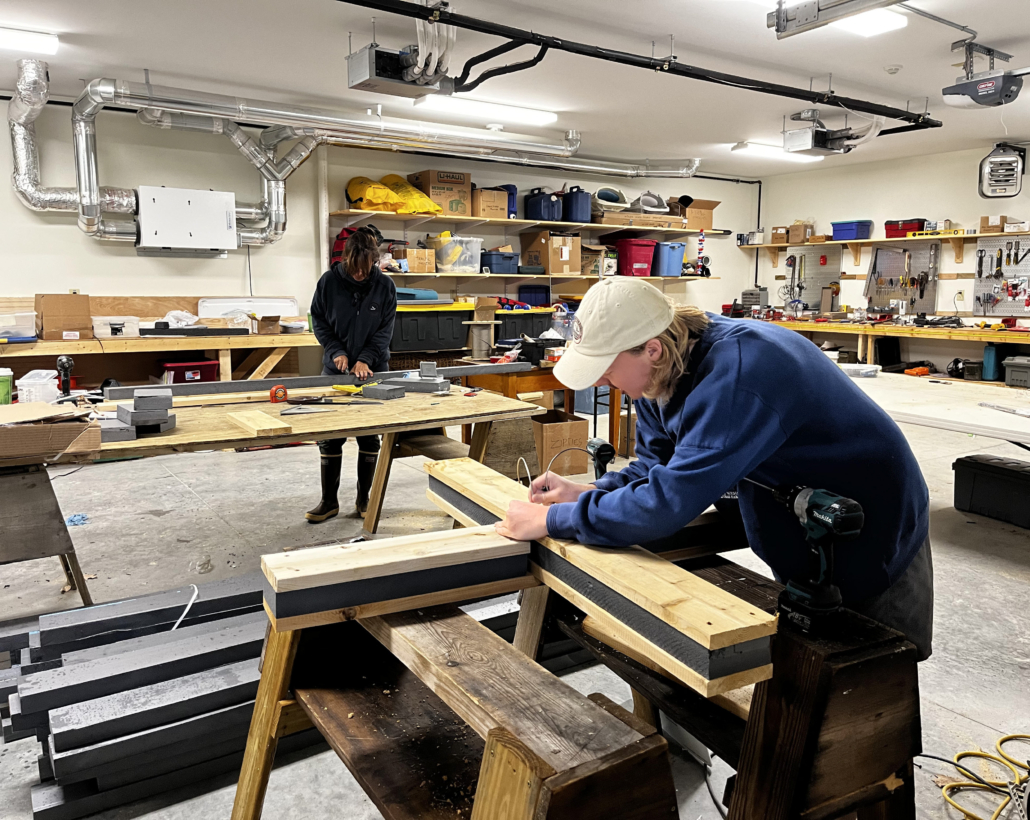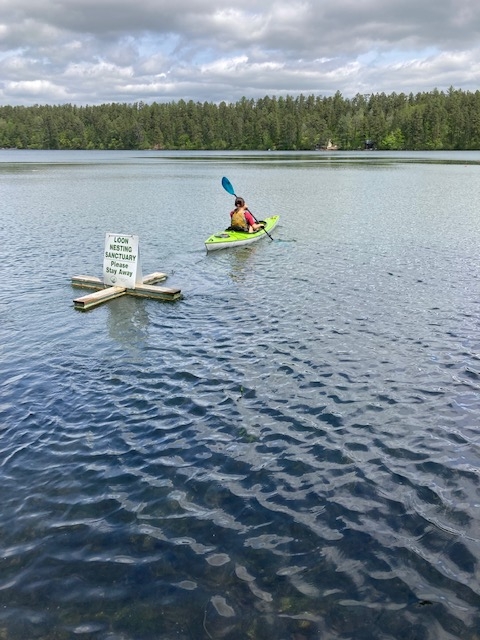Outreach Intern Blog
This summer, Kaila Hodges is working at the Loon Preservation Committee as our Outreach Intern. Click here to read her other blog for her posts, which describe the work that she and the rest of our field crew members are doing this summer to support New Hampshire’s loons!
Signs of Hard Work
Working at LPC always keeps you on your toes! You never know what you could be up to next. When I took this job, I did not think carpentry would be a skillset I needed. That’s why I was a bit surprised when I saw just how much time and effort LPC, and now myself, puts into building floating signs.
LPC staff will often float “Loon Nesting Sanctuary Signs” to keep people a safe distance from loon nests in vulnerable areas. After eggs have hatched, we sometimes float “Caution Loon Chicks” signs in nursey areas. These signs are good indicators for boaters, jet skiers, and kayakers to slow down and to give the loons some space.
Some loons nest in sites that are well hidden or are in low-traffic areas. Those sites probably do not require signs to keep boat traffic away. But on some lakes, loons nest in highly visible sites (like this one) where they attract attention. On other lakes, loon nests might be in highly-trafficked areas, such as channels, and require signs to limit human disturbance.
LPC staff spends hours in our on-site garage cutting wood, assembling pieces, and making anchors in order to build the signs that help ensure that nests and chicks are not threatened by curious lake goers. On May 30th, Caroline (LPC’s Outreach Biologist) and I made our way over to the garage where we would be spending the rest of our day. I was a bit intimidated by the abundance of tools around me that I didn’t really know how to use. Thankfully, Caroline reassured me that she was there to help every step of the way. After teaching me the basics of sign construction and power tool safety, we got to work! As I popped in my ear plugs and slid on my protective eyewear, I felt the giddy sense of excitement I always feel when I know I am making a difference for the loons.
After two hours and some intense work, I was dismayed to see that I had only completed five signs. For reference, LPC floated a grand total of 284 signs on lakes across the state in 2021. This was evidence that there was plenty of work still to come. Since our initial sign building day on May 30th, LPC staff have built over 30 additional signs. And we’ll still need to build more—every sign that we’ve made so far has been taken by our field biologists to protect loons nesting in sites vulnerable to human disturbance. It’s satisfying to know that the signs we’ve built are out there making a difference.
Lakes Region West Biologist, Jayden Jech, and Winnipesaukee Biologist, Ashley Keenan, assemble signs in early June.
While a well-hidden loon nest is often safe from detection and disturbance, some nests are threatened by their visibility or proximity to shoreline developments and water traffic. Floating signs and lines help to give loons the space they need to reproduce and raise chicks successfully. Remember, if you see a floating sign, it’s important to respect the local wildlife and keep a safe distance for the sake of the loons.
Lakes Region East Biologist, Emma Purinton, floats a sign to protect a vulnerable loon nest.




